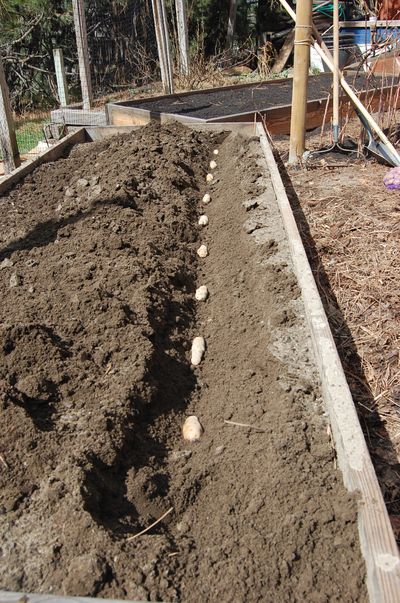Plant potato pieces now for plenty of spuds later

Most of us consider the potato something to fry, bake or boil and then smother with something else. In reality, this seemingly mundane vegetable has played an important role in the world’s development over the last 8,000 years.
The potato, all 3,500 varieties of them, began as a staple of the civilizations of the Andes Mountains of South America. The Incas worshipped them and derived their units of time from the length of time it took to cook a potato to different consistencies.
In the 1500s, the Spanish took them back to Europe where they fueled the agrarian revolution of the 1700s in northern Europe and set the stage for the Industrial Revolution a century later. Around 1845, the failure of the Irish potato crop three years in a row triggered the deaths of a million people and the migration of another two million.
Potatoes are planted in early spring from whole seed potatoes cut into smaller pieces with “eyes” or growing points or planted whole. They come in shades of red, white, pink, yellow, purple and blue and sizes from the huge baking spuds to small fingerlings just a few inches long. The varieties come with names like Yellow Finn, Candy Cane, Cowhorn and Russian Blue. Check out local nurseries now for the best selection.
To plant, dig a trench six to eight inches deep and three inches wide in good loose soil. Cut larger seed potatoes into two or three pieces, each with several large eyes, or plant smaller ones whole. The cut pieces need to air dry for a couple of days before planting.
Space the pieces about a foot apart in the trench and cover with two to four inches of soil. After the leaves have grown to about eight inches, hill soil up around the leaves, leaving about four inches exposed. Repeat this twice at two- to three-week intervals. The potatoes will form between the seed piece and the top of the mound. Supply a steady amount of water until the plants bloom then cut the water back by a third after bloom.
Potatoes can be grown under mulch in the garden or in large pots. Place the seed piece on or just below the surface of the ground or on a few inches of soil in the pot. Mulch with a six to 10-inch layer of straw, leaves or dried grass clippings. When the leaves reach eight inches, add more mulch at two- to three-week intervals until the plants bloom. Be sure to keep the potatoes fully covered with mulch to keep them from turning green.
New potatoes can be dug from the edges of the plant when it begins blooming while the whole crop can be dug when the tops of the plant die back. Dig carefully so you don’t damage the skins. Let the potatoes air dry for a few days and then store in a cool, dry and dark place.